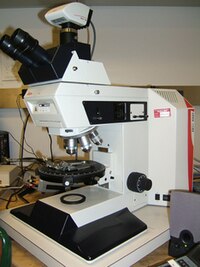User:Fdeltaconard/sandbox

Ceramic or pottery analysis in archaeology is a valuable source of information about past lifeways. Ceramic artifacts take a plethora of forms, including pottery vessels, clay tablets, figurines, and construction materials. Components of ceramic artifacts include characteristics such as chronology, usage, quality, color, material, firing quality, hardness, sourcing analysis, frequency distribution, shape, and size. Due to their composition and cultural significance, ceramic artifacts often survive well in many environments and archaeological contexts. A great deal of information can be extracted from ceramic analysis. The goal of post-excavation ceramic analysis varies, though is always anthropologically motivated in establishing a perception of an aspect of culture. Most of this analysis is performed in laboratories or dedicated sorting stations, though some of it is applied in the field shortly or immediately after excavation.
Basic Analytical Techniques[edit]
Residue from foodstuffs and other materials that have been stored or processed in the vessels may yield important information about not only their usage, but also ethnobotanical, paleoecological, and economic factors as well. Furthermore, ceramic artifacts can be used to make inferences about exchange and social dynamics. taxonomy and classification of ceramics through methods such as frequency seriation (also used for relative dating) and artifact distribution can help determine trade routes among populations in archaeological contexts. Social dynamics are often interpreted through use-wear analysis and overall pottery quality, namely drawing from components such as the quality of clays, attention to decoration, firing properties, and the contexts of artifacts within sites. Many of these factors are easily analyzed using simple laboratory tools and techniques, such as employment of the Munsell color system to categorize coloration, the use of magnification and microscopy in the analysis of grain size, and characterization using the Mohs scale of mineral hardness.
Ceramic Sourcing[edit]
Information on the process of manufacturing can also be attained from pottery. Studies on chemical analysis are conducted to source clays and tempering materials by geography. The latter--plastic and aplastic inclusions that enhance desirable attributes of a clay in the ceramic manufacturing process--including fiber, sand, rock fragments, and grog (clay) that can all be used to identify sources. Additionally, a slip (ceramics) can be quantifiably and qualifiably analyzed. However, "fingerprinting" clay sources can be difficult. Experimental archaeology and ethnology (particularly ethnoarcheology) can also inform understanding of manufacturing processes. In addition to the exceptional amount of information gained and relative inexpensiveness of these techniques, they also have the added benefit of being large non-destructive.
There are a number of more advanced methods by which ceramics can be analyzed, though these are not without their drawbacks. Many of these techniques are partially destructive and thus posit inherent ethical dilemmas. Furthermore, some of these methods of analysis may be expensive or require a specified set of knowledge or equipment to conduct. As a result, they are rarely as accessible when compared to many of the methods mentioned above, costing considerable investments of time and/or money. X-ray fluorescence is the practice of exciting a given target with high energy x-rays or gamma rays to obtain information about material chemistry. This process is becoming more readily available to archaeology labs, sometimes even in the way of handheld technology, though is still somewhat costly, potentially dangerous, sometimes destructive, and requires a very specified set of knowledge to operate and interpret properly. Even higher-energy tests can be conducted on archaeological ceramics to more concisely determine their chemical properties.
Ceramic Dating[edit]
Ceramic artifacts often provide dating evidence in the way of relative dating, though absolute dating methods are often possible. Archaeomagnetic dating (which includes the study of paleomagnetism) relies on ferrous and other magnetic materials, which, after being fired and having cooled, retain the polarity of the Earth's magnetic field. By establishing a sequence of the magnetic shifts and reversals throughout the planet's history, archaeomagnetic dating can allow archaeologists to pinpoint when an artifact or feature may have been fired. This is especially useful in the analysis of archaeological features such as kilns and hearths at sites where ceramics may have been fired. In addition, other more experimental analytic methods exist. Rehydroxylation dating (RHX) is another such method, in which a piece of clay is fired to the point of complete dehydration. RHX posits that ceramics regain moisture at a certain rate after being initially fired and dehydrated; by reheating a piece of clay to the point of complete dehydration and measuring the amount of moisture lost in the process, one could in theory estimate the age of that ceramic piece by correlating it with the rate at which moisture would accumulate. It should be noted that not only is this a destructive process, but it is fairly new and requires a more research before it is commercially available.
Artifact Quantification[edit]
There is debate as to whether the number or weight of shreds is more useful when quantifying the use of pottery on a particular site.[1] Some archaeologists find it useful to employ a quantification method popular in zooarchaeology. Instead of measures of minimum number of individuals (MNI), pottery analysis sometimes employs minimum vessel counts (MVC). This type of analysis uses the number of representative parts to extrapolate the number of complete objects in an assemblage. This gives a good measure of the relative proportion and distribution of ceramic artifacts in a specific context.[2]
Cultural Heritage and Ethical Considerations[edit]
It should be noted that ceramic analysis is subject to exceptionally high scrutiny by many communities, likely surpassed only by the direct analysis of human remains. This is because many well-preserved ceramic vessels are directly associated with graves, thus making them grave goods of high cultural significance. Many whole vessels in extant archaeological collections, both private and academic, were obtained either illegally or unethically through looting, private purchases, or unethical excavations by professional archaeologists. How, or whether, these artifacts should be stored and analyzed is a matter of great contention among archaeologists and indigenous populations, especially descendant communities.

